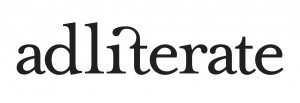Dynamic micro brands

The Swallow Tailed Hummingbird. Like most dynamic micro brands they are small agile and very fast. Image courtesy of Flavio Cruvinel Brandao
So, I have been obsessing recently about cool and funky little brands like Method, Hendricks, Riverford Organic Vegetables, Dorset Cereals, Good Energy and the like.
And I thought I might draw a few conclusions about brands like these since they have alot in common.
The intention is to provide some learning for brand owners and agencies alike.
I have decided to call this little bunch of businesses dynamic micro brands.
This is in part a homage to Hugh at Gaping Void – he describes the brands he has been involved in (English Cut and Stormhoek) as global micro brands. But not all the brands I have been thinking about are global and I like the ‘dynamic’ word.
It underlines their agility and speed of growth. It also points to the observation that what they lack in presence they deliver in potency. Here I am also making a slight nod there to WPP’s Brandz model that categorises brands by their presence and voltage. It is just that I prefer the word ‘potency’.
Dynamic micro brands are going places and they are often going there in dull or commodified markets where they offer real difference for the consumer and potentially high margins for the business.
Here are four things that these dynamic micro brands have in spades. I suspect I shall worry out others as I collect more examples.
1) They are dripping in authenticity
This takes many forms. It could be heritage, it could be expertise or it could be a damn good story about why the brand was set up in the first place.
Hendrick’s has little heritage (it was founded in 2000) but masses of distilling expertise drawn from the Grant family, not to mention the pure scottish spring water.
Riverford Organic Vegetables are run by a farmer supplying produce from his and neigbouring farms, it is not an intermediary brand like Abel and Cole.
A former dynamic micro brand, Innocent, draws authenticity from the story about its founders asking their first customers to vote on whether they should leave their jobs and make smoothies for a living.
And Dorset Cereals are and always have been, made in Dorset.
2) Product performance is paramount
If we have learned anything in our post Cluetrain brandscape it is that nothing but nothing can make up for a poor product anymore. Marketing communications can do loads for a business but they are losing their mercurial ability to paper over the cracks of a failing product with a bloody good ad.
Dorset Cereals packaging looks marvelous however, it is not there to cover up a poor product but to amplify its quality.
Method’s products are environmentally benign but the damn things work thanks to the efforts of Adam Lowry, the co-founding chemist.
And as for Good Energy, no ifs, no buts all its electricity is from renewable sources.
3) They pack a point of view
This is the position idea I am so fond of and many people out there have been working with, which I am enormously flattered by.
Method believe that you can’t clean people’s hands, clothes or houses at the expense of the cleanliness of the environment, that is why they call themselves ‘people against dirty’.
Hendricks hate the orthodox world of gin manufacture and marketing.
While Good Energy believe that you can only call yourselves a ‘green’ energy company if you have nothing to do with electricity generation that uses non-renewables.
4) There is an idea behind the brand not just a bunch of brand ideas
And these points of view manifest themselves in real brand ideas, where the idea leads everything the brand does and has a pretty strong influence over the business itself.
Hendrick’s embrace the ‘unusual’ in all its many forms. Dorset cereals love life’s simpler pleasures and help you enjoy them every single day. While for Riverford Farms what really matters performance in the kitchen.
And the reality is that these are pretty good rules for any brand to recognise these days:
– Authenticity that gives the brand credibility
– Product performance that is paramount and about which the business is fanatical
– A position about something we care about
– And a big generous brand idea that governs everything the brand does and makes its world a simpler place for the business and a more rewarding place for its customers
Oh, and here are a few charts to help bring the whole thing to life.
Discover more from
Subscribe to get the latest posts sent to your email.

Great post, Richard! I’m from a nation of these brands, and share your obsession. (Yes, I recognise the irony in my my main client being the polar opposite…)
One question: Why is Innocent a “former” d.m.b.? OK, the company is quite a bit bigger now, but surely the brand itself is still small and dynamic?
So… What happens to d.m.b.’s when they grow up? Can they preserve the dynamism and not dilute their potency? Method seem to be managing it, despite one of the founders appearing in an ad for Blackberry (or similar)…
The above-mentioned 42 Below had a similar genesis to Innocent, and has just sold to Bacardi for a fortune. Bacardi bought the brand for its unique blend of irreverance and purity (see ad-links below)…
Whats the bet they fuck it up?
(42 Below ads:
I think Innocent is a former DMB because it is starting to match its potency with real presence both in mainstream distribution and mainstream media. Potent and present – that’s a whole new category.
The only thing that makes me a bit irritable about Dynamic Micro Brands is this: whenever a motherfucking DMB is featured in any marketing case study it is ALWAYS the type of DMB that appeals predominantly to uber-precious, metrosexual advertising types. Often it is even a DMB founded by uber-precious, middle-class ad types – Howies, Innocent, Wagamama…. some gay-ass snowboard manufacturer etc.
I’m still waiting to see a DMB presentation about Mr Porky’s Pork Scratchings or Fray Bentos.
Tunnocks is, thankfully, one exception: though ad people may only like the brand ironically.
i’m just perplexed by the need for another badge. What is wrong with Porters ‘Niche’ brand theory. These are niche brands who offer something completely different so by default their advertising/external communications will always be different.
Picking up on Rory’s point from a slightly different angle, I have noticed this trend emerging in quite a lot of advertising executions. And using what I think is Rory’s terminology – the generaly “gayness” of ads at the moment…By that I mean;
– Nu-Folk music
– Sunshine
– People in love..
How British is that???
‘Potent & Present is a whole new category’.
BIG IS BAD. Why is everybody so obsessed with being big and waving their you know what about?
You can’t, you simply can’t reconcile stuff like fanatic product performance with profitability and above average growth, you can’t reconcile authenticity with somebody who, the moment they get to the right size goes off to lick Bacardi’s rim to sell out, you can’t reconcile having a cultural meaningful point of view with something that is manufactured in those strange places called ad agencies, you can’t have a big idea when you decide on it by a committee of creatively challenged but very well educated middle class marketing types. What is the point of learning from them if us and our clients are nothing like them all that we want to do is big d. waving stuff, while these brands – I suspect -wanted to do different stuff which is a different agenda. In fact I suspect getting big is something that catches them by surprise then they go and sell out – this goes for small hot shop creative agencies too by the way. There is that saying they all start different and end up the same, show me a couple of brands (or agencies) who remained different after getting big, come on I dare ya…-:)